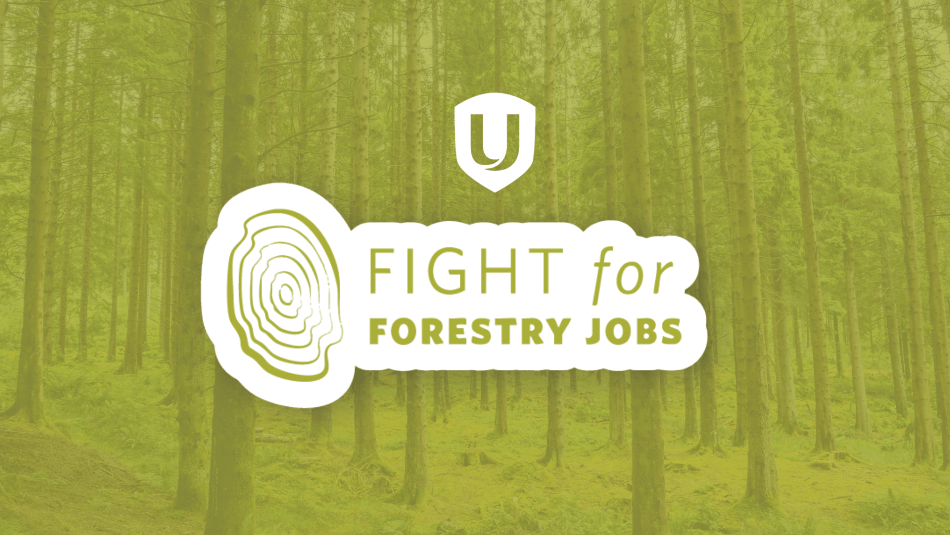
Share
The Honourable Doug Ford
Premier of Ontario
Premier Ford,
Re: Supporting Ontario’s Forestry Sector and Communities
I am writing to respectfully request action from the Ontario government to support the province’s forestry sector, forestry workers, and the numerous forestry-dependent rural communities across Ontario.
Unifor is Canada’s largest private sector union, with more than 320,000 members across the country, working in every major sector of the Canadian economy. Unifor is also Canada’s forestry union, with 24,000 members spread across 10 Canadian provinces – including over 4,000 forestry members here in Ontario.
Unifor’s forestry sector members work in a variety of forestry, logging, and firefighting occupations as well as wood product, bioenergy and pulp and paper manufacturing facilities.
The Poly-Crisis in Ontario’s Forestry Sector
Our members know first-hand that Ontario’s forestry sector continues to experience a perfect storm of repeated and intersecting crises, and a combination of economic, environmental, and global challenges continues to destabilize the broader sector.
The ongoing softwood lumber dispute and the threat of further tariffs have intensified a trade war that are causing disastrous repercussions across the forestry sector. Earlier this year, the United States Department of Commerce raised combined preliminary softwood duties on Canadian softwood lumber to 34.45%. In March 2025, the White House announced a so-called Section 232 investigation to determine the effects on national security of imports of timber, lumber and their derivative products. Depending on the findings of that investigation, we could see tariffs on these products starting in November. These potential tariffs would be on top of the already unacceptable 34.45% softwood duties, and would create an immediate financial crisis in the sector.
Every season, wildfires pose a serious threat to our forests, forestry operations, and communities that depend on forestry. Important conservation measures, including species and habitat protection efforts, continue to complicate long-term planning for the sector. Volatile prices are still making companies think twice about investments, and new EU regulations could negatively impact the ability of forest products to be sold in that market and around the world.
Given this range of diverse crises – and since there are both common, national-level challenges as well as regionally-specific ones – Unifor has been calling for a much more coordinated, strategic response developed by, and with the active participation of, all levels of government, forestry workers and their union, Indigenous communities, forestry employers and industry groups, forestry training and education institutions, and local communities.
An Expanded National Homebuilding Strategy
At the federal level Unifor has already proposed the creation of a National Homebuilding Strategy that better connects our forests and wood products with residential construction, with the goal of addressing Canada’s housing crisis while supporting a sustainable, value-added forestry industry.
Our proposal would build off the federal government’s Canada’s Housing Plan but tie it further back up the supply chain to include the harvesting, milling, and fabrication of Canadian-sourced and manufactured wood and engineered wood products. The goal is to create more value-added economic activity here in Canada, including Ontario. Our proposal will provide good jobs for forestry workers, while also building a domestic market for innovative engineered wood products to be used in modular housing construction, which would ramp up housing supply and promote affordability.
A Broader National Forestry Strategy
A broader national forestry strategy would engage all the major stakeholders identified above, to guide the creation and implementation of a powerful sector strategy to build a sustainable future for Canada’s forest industries, the well-paying union jobs that they support, and the forestry communities in which they operate.
As already noted, a comprehensive national forestry strategy must include regional flexibility, since issues like species and habitat conservation, wildfire risk and impact, fibre supply, access to overseas markets, energy costs, and the labour market can vary widely from province to province and region to region.
Supporting Forestry Workers and Employers
In Ontario, in recent years we have seen the closure of a pulp mill in Terrace Bay, a pulp and paper mill in Espanola, and a corrugated cardboard mill in Trenton.
All levels of government must work together to provide income supports to forestry workers who have been impacted by closures and curtailments driven by the softwood lumber dispute, the tariff threat, or other macro-economic shocks. In some cases, to “keep producers producing, and workers working,” the federal and provincial governments must be prepared to provide liquidity supports to forestry employers who are facing short-term financial headwinds due to the ongoing poly-crisis in the sector.
Developing New Markets for Ontario’s Forest Products
Unifor’s proposal for an enhanced National Homebuilding Strategy represents one effort to develop new domestic demand for forest products. But the provincial government must continue to support and expand other efforts to develop and improve domestic demand as well as new domestic and foreign (non-U.S.) markets.
Limited markets for sawmill residuals (bark, sawdust, chips) in Ontario mean operators are stockpiling product, increasing storage costs, and leading to heightened fire risk (for example, there was a serious fire at a plywood mill in Cochrane in August 2024).
Investing in Infrastructure
The forestry industry in Ontario will benefit from continued support regarding infrastructure. The provincial program that provides funding for forestry roads must be maintained and enhanced, and the government should explore other opportunities for strategic infrastructure investments to support the sector.
Promoting Forest Bioenergy Projects
Governments of all levels must do more to coordinate together to promote and prioritize forest bioenergy projects, which represent a sustainable and growing opportunity for green power generation. While these bioenergy projects alone are obviously insufficient to meet Ontario’s power generation needs, they represent an important part of the mix of generation modes, along with hydro, nuclear, wind, and solar.
The provincial government has a number of policy levers at their disposal regarding forest bioenergy generation, including implementing longer-term contracts to create more stability for operators and facilitate investment, setting biomass-fired electrical generation targets with 20-year contracts, procuring bioheat for public infrastructure, and supporting district heating projects.
A Comprehensive and Coordinated Plan for the Future
Ontario’s forestry sector and forestry workers face an ongoing poly-crisis, and it is critical that governments and other stakeholders work together in coordination.
Provincial level supports, policies and other responses are a critical part of this coordinated response, but a patchwork or piecemeal approach won’t work. All three levels of government must work with other stakeholders to develop a comprehensive and coordinated national-level plan that respects and addresses regionally specific issues.
I look forward to meeting with you soon to discuss these proposals in more detail. Ontario’s forestry sector, and especially its forestry workers and communities, cannot afford to wait much longer.
Sincerely,
Lana Payne Samia Hashi
National President Ontario Regional Director


